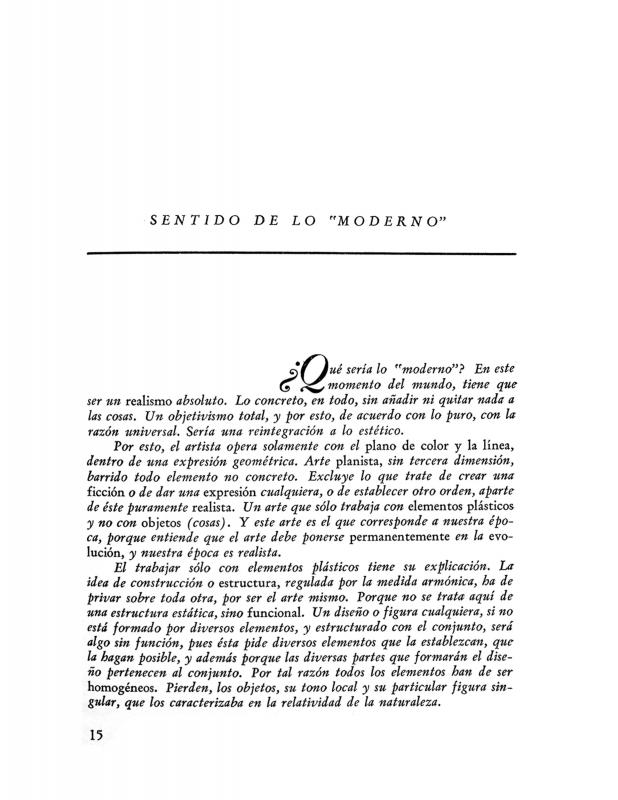The Brazilian artist Rosa Acle (1916–90) was one of Joaquín Torres García’s choice students. She started taking private classes with him in 1936 and was a member of the AAC (Asociación de Arte Constructivo) until she returned to Brazil in 1939. According to this second letter to Acle, JTG considered her to be an important supporter of the AAC because of her financial contributions. Her departure from Uruguay therefore meant not only the loss of a talented and subtle painter—who audited the maestro’s classes—but the loss of a monthly income [see the first letter from JTG to Miss Acle in the ICAA digital archive (doc. no. 1263899)]. The group clearly operated their bold cultural venture on a shoestring. In fact, at that time they were forced to move to different premises where the lower rent would allow them to keep publishing their magazine, Círculo y Cuadrado. JTG claims to have lost most of the artists who had been following him until 1937–38, and notes that very few remained the following year: he mentions the writer Juan Carlos Onetti (1909–94) and the painters Amalia Nieto (1907–2003) and Héctor Ragni (1897–1952), the Ribeiro brothers, and his own sons Horacio and Augusto Torres Piña. Responding to that unfortunate situation, JTG lashes out at the limited local tradition and “nativism” (the literary and cultural movement that he calls ridiculous), and describes the Uruguayan art scene as a “market place” where everything is bought and sold with no regard for origin or value. He admits that “having seen that universal themes were too much for these people,” he had decided to go down to the “market,” though not before safeguarding the nucleus of his aesthetic instructions: “the Structure.” The ideas he discusses in this letter resurfaced a year later in his 500th Lecture, though that took the form of an educational presentation.
[As complementary reading, see the following articles written by Torres García: “Con respecto a una futura creación literaria” (doc. no. 730292); “Lección 132. El hombre americano y el arte de América” (doc. no. 832022); “Mi opinión sobre la exposición de artistas norteamericanos: contribución” (doc. no. 833512); “Nuestro problema de arte en América: lección VI del ciclo de conferencias dictado en la Facultad de Humanidades y Ciencias de Montevideo” (doc. no. 731106); “Introducción [en] Universalismo Constructivo” (doc. no. 1242032); “Sentido de lo moderno [en Universalismo Constructivo]” (doc. no. 1242015); “Bases y fundamentos del arte constructivo” (doc. no. 1242058); and “Manifiesto 2, Constructivo 100%” (doc. no. 1250878)].









